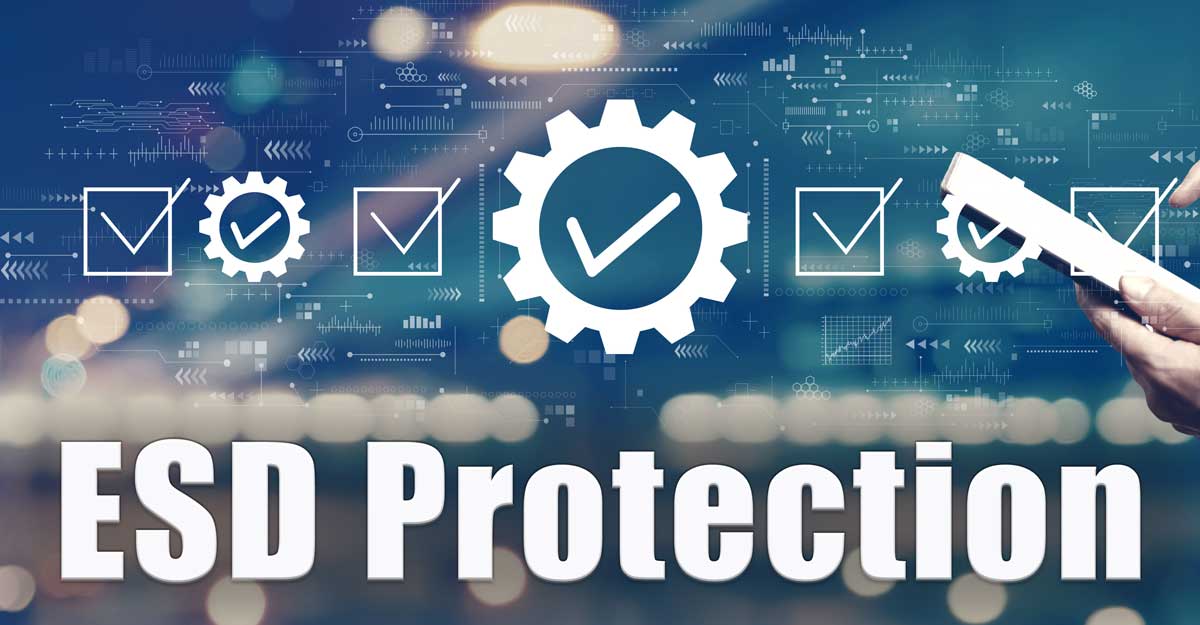Choosing Industry Specific ESD Safe Products
Overview
- Consider industry-specific standards like ANSI/ESD S20.20 when selecting ESD protection products.
- Assess your environmental conditions, such as humidity and temperature, to choose the right tools, like ionizers or humidifiers, for static control.
- Ensure the protection of sensitive components with ESD-safe packaging, grounding mats, and wrist straps.
- Implement anti-static clothing and proper workstation designs to prevent static buildup in healthcare and cleanroom environments.
- Regularly conduct employee training and audits to maintain compliance and reinforce ESD control measures in your facility.
Ensuring the safety and reliability of electronic components is crucial in industries where electrostatic discharge (ESD) can cause significant damage. Choosing the right ESD protection products for your industry involves considering several key factors, including industry-specific requirements, environmental conditions, and the sensitivity of the components you're handling. Whether you're in electronics manufacturing, aerospace, healthcare, or another sector where ESD poses a threat, selecting the correct protection measures is essential for maintaining the integrity of your operations.
Industry-Specific ESD Requirements
Every industry has unique ESD protection standards and guidelines. For example, aerospace and defense industries often adhere to stringent military standards, while electronics manufacturing may follow ANSI/ESD S20.20. Healthcare, with its growing use of sensitive electronics in devices, may require specific anti-static measures to safeguard delicate equipment. Before selecting ESD products, it is crucial to familiarize yourself with the applicable industry standards to ensure compliance and optimal protection.
Adapting ESD Control to Environmental Conditions
The environment in which you operate plays a significant role in determining the right ESD control measures. Humidity levels, temperature, and the presence of insulative materials can all contribute to static build-up. In dry or cold climates, static tends to accumulate more easily, making the need for additional protection critical. Products such as humidifiers, ESD ionizers, and ESD-safe flooring can help neutralize static in high-risk environments. It’s important to assess your workspace conditions to choose the most effective ESD protection products.
Assessing Component Sensitivity to ESD
Different electronic components have varying levels of sensitivity to ESD. High-sensitivity components, such as microchips and integrated circuits, are more vulnerable to even small electrostatic discharges. In such cases, it is essential to implement robust ESD control measures, including the use of grounding mats, wrist straps, and ESD-safe packaging that can prevent damage. Understanding the sensitivity of the components you handle will guide your choice of protection products.
Critical ESD Protection Tools for Every Workspace
- Wrist Straps: These are one of the most basic yet effective tools for preventing ESD. Wrist straps work by grounding the person handling sensitive components, allowing static electricity to discharge safely. For industries that require constant interaction with ESD-sensitive parts, such as electronics manufacturing or aerospace, wrist straps are a must-have for minimizing risk.
- Grounding Mats: ESD grounding mats are designed to dissipate static charges from both individuals and electronic components. These mats can be placed on workbenches or floors and are ideal for environments where sensitive devices are frequently assembled or repaired. Industries like electronics and healthcare often rely on grounding mats to create a safe and static-free workspace.
- ESD-Safe Packaging: Proper packaging is critical for safely storing and transporting sensitive electronic components. Anti-static bags, conductive containers, and foam inserts help shield parts from static damage. In sectors like electronics manufacturing and aerospace, where components are shipped across various facilities, using ESD-safe packaging ensures that your products remain protected during transit.
- Ionizers: ESD ionizers are used to neutralize static charges in environments where grounding alone is insufficient. These devices emit ions that neutralize the charges on surfaces, making them ideal for cleanrooms or high-precision environments like biomedical labs and aerospace manufacturing. Ionizers are also useful in areas with insulative materials that can’t be grounded.
- Anti-Static Clothing: Wearing ESD-safe garments, including lab coats, gloves, and shoe covers, is another crucial aspect of preventing static buildup. These garments are particularly important in industries like healthcare and cleanroom environments, where maintaining a sterile, static-free environment is essential. Anti-static clothing ensures that workers do not introduce static to sensitive work areas.
Building a Comprehensive ESD Control Program
To implement an effective ESD control program, it's vital to integrate the right products with industry best practices. Start by performing an ESD risk assessment to identify areas where static buildup is most likely to occur. Then, tailor your ESD control measures to your specific needs, ensuring compliance with relevant standards like ANSI/ESD S20.20 or IEC 61340.
Employee Training is another critical component of a successful ESD control program. Regular training sessions can help workers understand the importance of ESD protection and how to use the products correctly. Routine Audits should also be conducted to verify that ESD control measures are effective and that employees are adhering to the required protocols.
Ensuring Optimal ESD Protection for Your Industry
Choosing the right ESD protection products is essential for maintaining the safety, reliability, and functionality of electronic components across various industries. By considering industry-specific requirements, environmental conditions, and the sensitivity of the components you handle, you can implement an ESD control program that protects your operations from static damage. From wrist straps and grounding mats to ionizers and anti-static clothing, the right combination of products will help you create a secure and compliant environment tailored to your industry’s needs.


